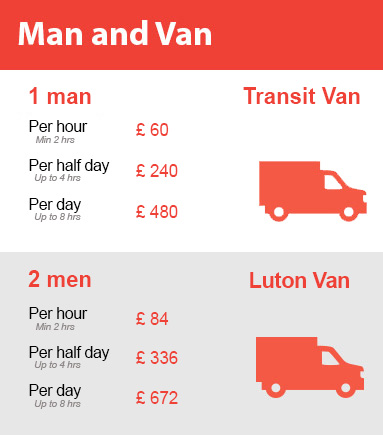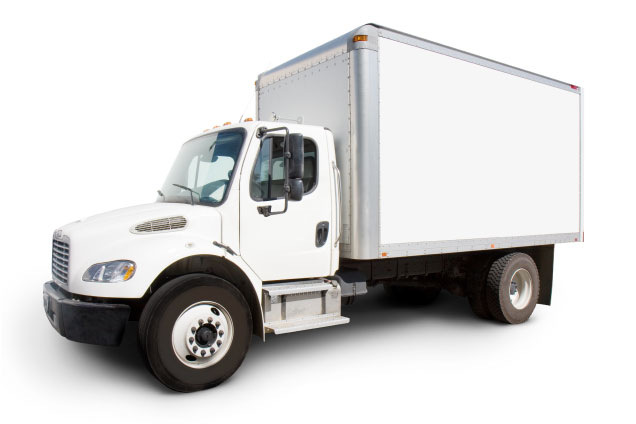Strategic Packing: Key Techniques for Relocating
Posted on 18/05/2025
Strategic Packing: Key Techniques for Relocating
Relocating to a new place is a significant milestone in anyone's life, but it also comes with its unique set of challenges. One of the most crucial aspects of a successful and stress-free move is strategic packing. Whether you are moving across the country or just down the street, understanding key packing techniques can save you time, money, and ensure your possessions arrive safely. In this comprehensive guide, we'll explore essential moving and packing strategies, expert organization tips, and packing hacks for relocation to help you master the logistics of your move.

Why Strategic Packing Matters When Relocating
Strategic packing is more than just placing your belongings in boxes. It's an organized, methodical process designed to protect your valuables, maximize space, and streamline your transition from one home to another. Here's why packing strategically for relocation is essential:
- Reduces Stress: Knowing your items are packed safely gives peace of mind.
- Saves Time: Well-labeled and organized boxes simplify both packing and unpacking.
- Prevents Damage: Correct techniques minimize the risk of breakage and loss.
- Cost-Effective: Efficient packing can lower moving costs by reducing box count and preventing damage-related expenses.
Pre-Packing Preparation: Laying the Groundwork
Before you even touch a box, there are a few preparatory steps for organized relocation packing that set the foundation for a smooth process:
1. Declutter Before You Pack
Relocation offers the perfect opportunity to purge unwanted and unused items. Go through each room and separate items into donation, sale, recycle, or toss piles. This reduces the number of belongings you need to pack and makes unpacking simpler.
2. Gather Quality Packing Supplies
Investing in sturdy boxes, bubble wrap, packing paper, heavy-duty tape, and markers is crucial. You may also need specialty containers for fragile items, wardrobes for clothes, and protective sleeves for electronics.
3. Create a Packing Timeline and Checklist
Develop a comprehensive checklist and assign dates to each packing stage. A timeline prevents last-minute chaos and ensures nothing important is forgotten. Use spreadsheets or moving apps for digital support.
Essential Strategic Packing Techniques for Moving
Now that you are prepared, let's dive into the core techniques for effective packing when relocating:
1. Pack Room by Room
- Focus on one room at a time to stay organized.
- Label each box with its destination room and a brief description of its contents.
- Color-coding boxes for each room can aid movers and streamline unloading.
2. Use the Right Size Boxes
- Heavier items such as books or small appliances go in smaller boxes for easier lifting.
- Lightweight or bulky items (linens, pillows) can be packed in larger boxes.
- Never overload boxes, as this risks breakage and injury.
3. Heavier Items at the Bottom
Always place heavier items at the bottom of the box and lighter items on top. This prevents damage and makes boxes more stable to stack during transport.
4. Fill Gaps to Prevent Shifting
Use towels, clothing, or packing paper to fill empty spaces in each box. This strategic packing method for moving keeps contents from shifting, reducing the chance of breakage.
5. Wrap Fragile Items Individually
- Use bubble wrap, packing paper, or foam.
- Label the boxes "FRAGILE" and indicate which side is up.
- Double-box extremely delicate items for extra protection.
6. Create an Essentials Box
Set aside a box with everyday necessities (toiletries, medication, chargers, snacks, a couple of outfits, and important documents). Keep this box easily accessible during your move for a seamless first day in your new home.
Packing Techniques for Specific Items
Certain household items require special care and strategic packing variations:
Electronics and Appliances
- Whenever possible, use original packaging for electronics.
- Remove batteries and cables; wrap them separately and clearly label.
- Reinforce boxes with extra tape and cushioning.
Clothing and Shoes
- Wardrobe boxes keep clothes on hangers and minimize wrinkles.
- For shoes, use shoe boxes or wrap each pair individually to maintain shape.
- Out-of-season clothes can be vacuum-sealed to save space.
Kitchens and Glassware
- Wrap dishes individually, stack vertically (like records) rather than flat.
- Insert cardboard dividers for glassware and stemware.
- Fill gaps and tops of boxes with extra padding.
Artwork and Mirrors
- Use specialty boxes or crate fragile items.
- Wrap with glassine (for paintings), then bubble wrap, and mark as "FRAGILE."
- For mirrors, tape an "X" on the glass to minimize shattering risk.
Furniture Disassembly and Protection
- Disassemble bulky furniture when possible. Keep screws and small parts in labeled bags taped to the item.
- Wrap furniture in moving blankets, stretch wrap, or bubble wrap to prevent scratches.
Advanced Packing Strategies for a Seamless Relocation
Utilize Digital Tools & Inventory Apps
Modern moves are easier with technology. Use moving inventory apps to track what's in each box or take photos of box contents for easier unpacking.
Optimize Loading Order
Pack the moving truck in the reverse order you intend to unload. Large, heavy furniture should go in first, followed by boxes ordered by room and usage priority. Keep the "essentials box" last for easy access.
Stay Environmentally Friendly
- Reuse existing containers such as suitcases, totes, and baskets.
- Opt for biodegradable or recyclable packing materials whenever possible.
Labeling for Efficiency
- Detailed labeling including box number, contents, and destination room speeds up unpacking.
- Consider a master list or spreadsheet for quick reference during and after the move.
Common Packing Mistakes to Avoid During a Move
- Last-Minute Packing: Rushed packing leads to breakage, confusion, and missing items.
- Using Weak Boxes: Flimsy boxes collapse and jeopardize your possessions.
- Lack of Organization: Randomly packed boxes increase stress and unpacking time.
- Neglecting to Label: Boxes without labels lead to lost items and wasted effort.
Hiring Professional Packing Services: When and Why
If your schedule is tight, your move is large-scale, or you have specialized packing needs, hiring professional packers can be an excellent decision. Professional moving and packing teams use advanced packing methods, provide all necessary supplies, and guarantee protection for your valuables. This option is especially recommended for:
- Corporate or cross-country relocations.
- High-value or fragile collections.
- Elderly individuals or anyone unable to physically handle a full DIY move.
After the Move: Unpacking and Staying Organized
Once you've relocated, the work isn't over yet. Strategic unpacking is just as important for settling in efficiently:
- Start with the essential boxes and rooms (kitchen, bathroom, and bedrooms).
- Unpack one room at a time to prevent clutter.
- Dispose of packing materials as you go for easier cleaning.
- Double-check your inventory list to ensure nothing is missing.
Key Takeaways: Your Strategic Packing Checklist
For a successful move, remember these top tips for effective relocation packing:
- Plan ahead and start early.
- Declutter ruthlessly.
- Use sturdy, properly sized boxes and quality packing materials.
- Pack by room and label everything in detail.
- Make use of modern tools for tracking and inventory.
- Don't forget your essentials box!

FAQs: Strategic Packing for Relocation
- How early should I start packing for a move?
*Begin at least four weeks in advance*, focusing first on rarely used rooms and seasonal items. - What is the most efficient way to pack clothes for moving?
*Wardrobe boxes* and vacuum-sealed bags save space and keep clothes clean and organized. - How do I protect fragile items during relocation?
*Wrap each item individually, use specialized dividers for glasses, and never overfill boxes.* - Should I hire professionals for packing?
If you have a large or delicate household, or limited time, professional packers can save time and guarantee item safety.
Conclusion: Mastering Strategic Packing for a Smooth Relocation
Strategic packing is the secret to unlocking a less stressful, more efficient move. By implementing the above packing techniques for relocation, you ensure your belongings are organized, protected, and easy to transport. Not only does this safeguard your prized possessions, but it also makes unpacking in your new home faster and more enjoyable. Remember, a strategic move starts with planning, preparation, and the right techniques from the very first box you pack. Happy moving!




